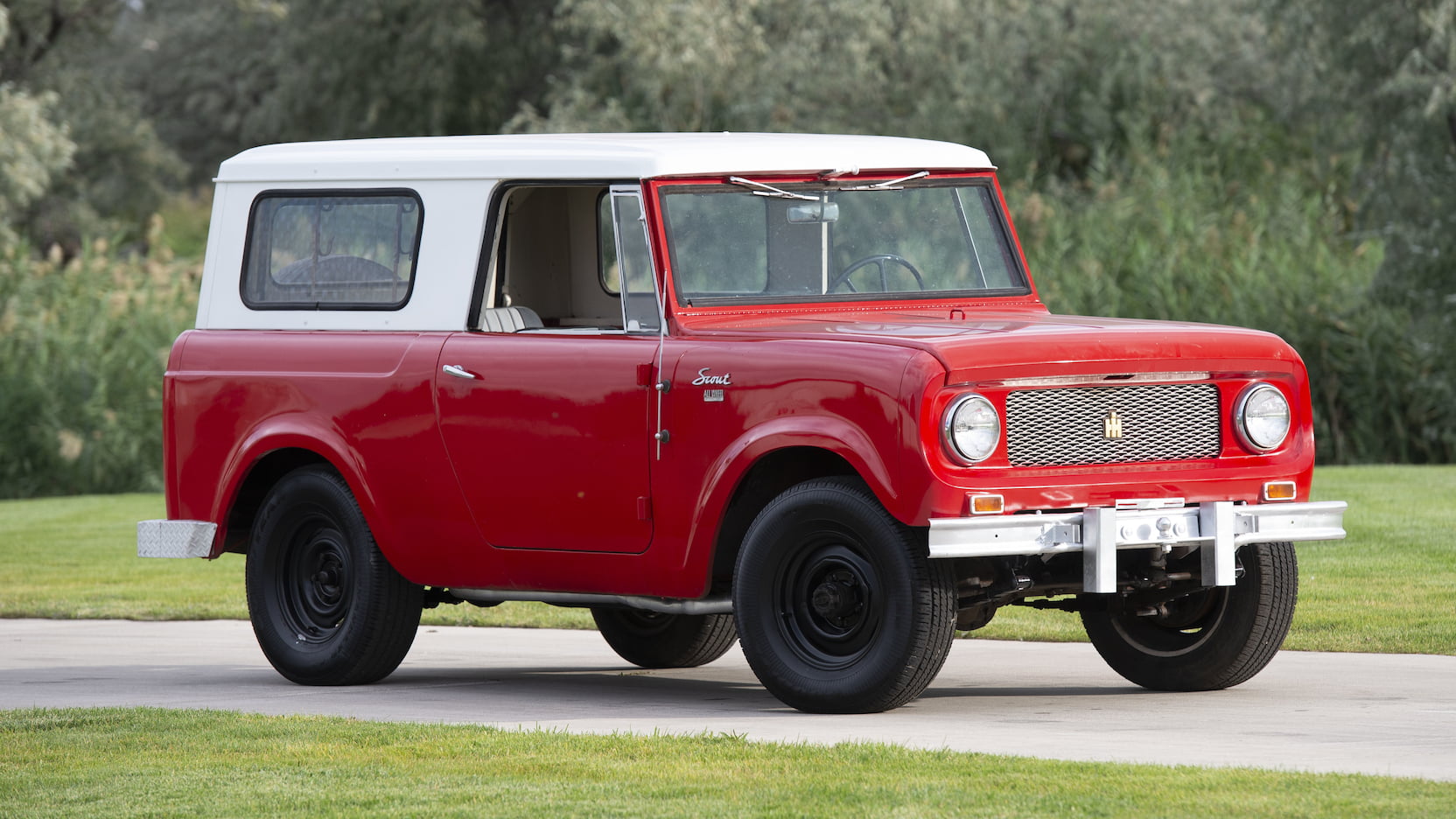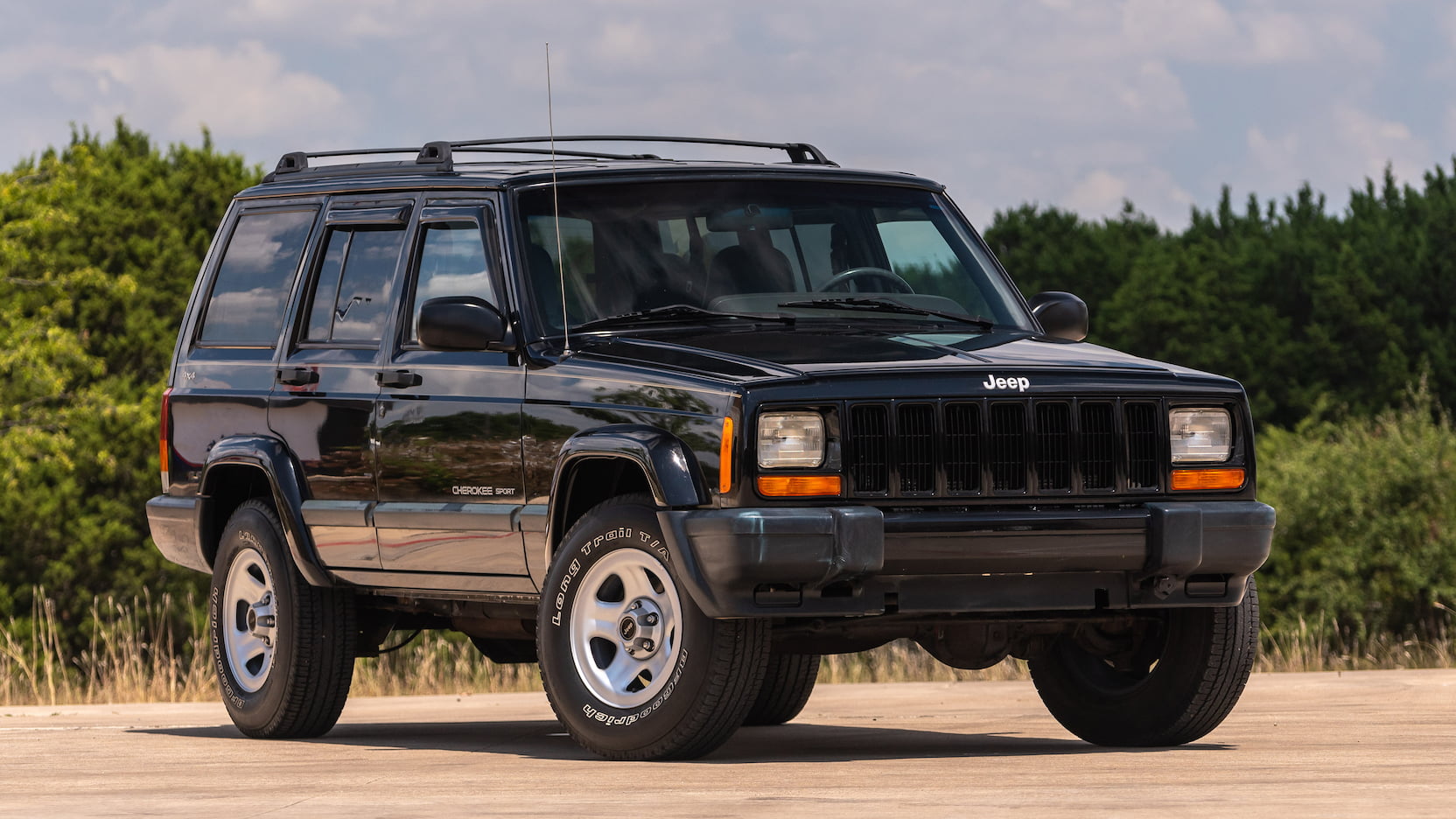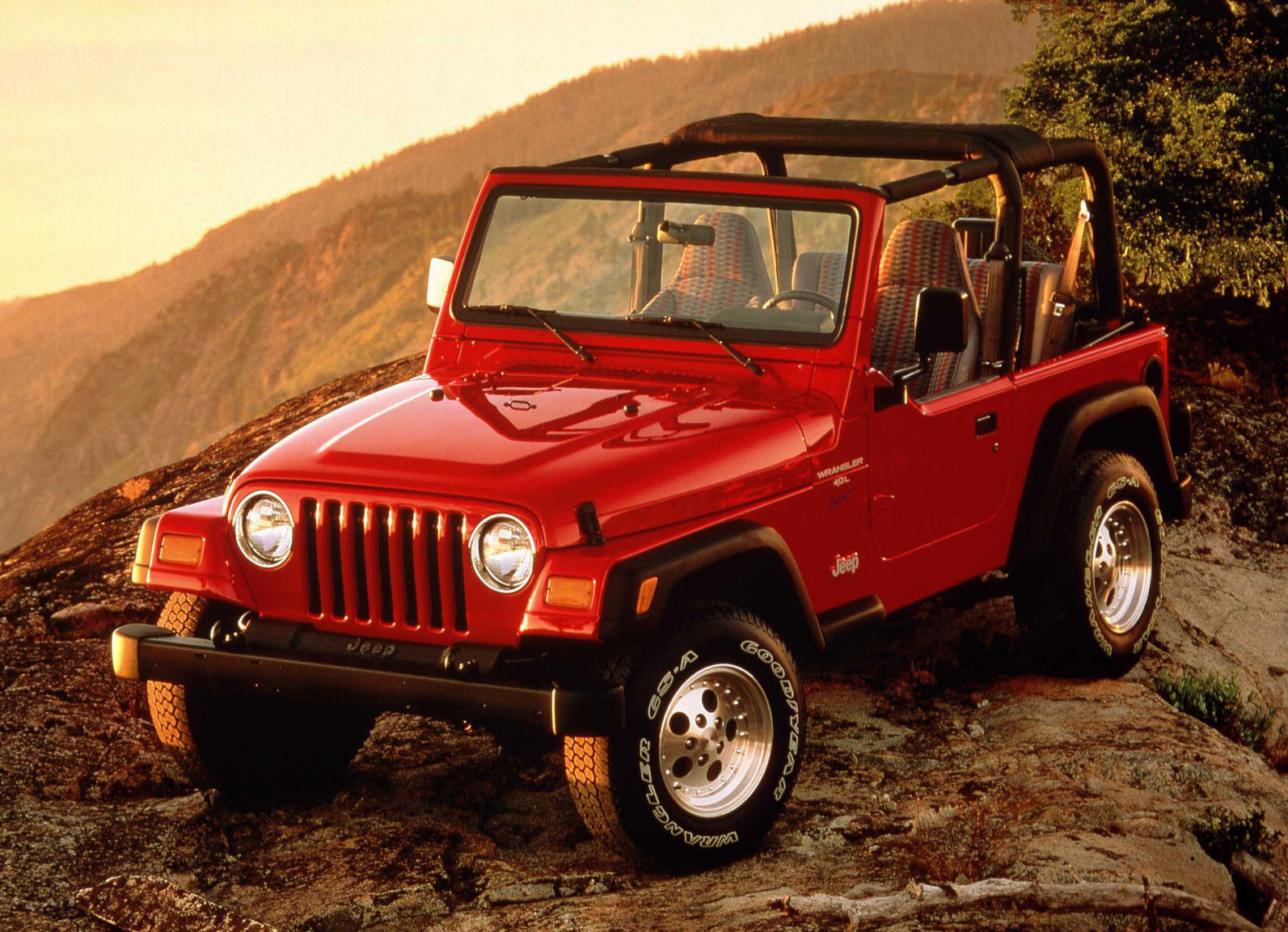Media | Articles
6 rigs that offer value and ruggedness by the truckload
For those of us shaking off the chill of winter, the joy of spring driving season is right around the corner. And with the deluge of canceled events, shuttered businesses, and work-from-home directives, the freedom of the open road sounds more appealing than ever. If you’ve got some time on your hands and are digging into research for a collector SUV (or truck), Hagerty valuation experts, with our vast repository of data, are keen to share our perspective.
No, we don’t have a crystal ball, especially not during uncertain times like these, but our vault of data (including insurance quote data, the frequency with which certain vehicles are added to policies, auction activity, private sales data, and more) do help paint a picture. Anything can happen going forward, of course, and the vehicles that follow aren’t the next guaranteed blue-chip investments to be stashed away. However, if you want an accessibly priced truck or SUV that is positioned to be desirable down the line, check out these six rugged rigs.
1961–71 International Harvester Scout

If you like the first-gen Ford Bronco but prefer something even simpler and more agricultural, check out the Scout. Built to complement International Harvester’s line of light-duty trucks, the Scout became popular particularly early on as a Travel Top wagon with four-wheel drive. Earlier models came exclusively with a 152-cubic-inch slant-four engine, which got turbocharged for 1965 and grew in size to 196 cubes in 1967. At that same time the first V-8 hit the scene, and eventually inline-sixes joined the fray, too. The Scout is a sturdy and capable off-roader that is off the average person’s radar.
“Scouts don’t have the brand recognition/cult following as the other vehicles do, and parts are harder to find,” says Hagerty valuation expert James Hewitt. “They are one of the last in line for the substitution game that buyers play with more expensive off-roaders. They will always be the ‘budget’ buy until the uniqueness becomes so cool buyers are willing to pay up for it.”
Marketplace
Buy and sell classics with confidence
Overall interest in IH has been growing in recent years as people become more aware of the brand’s appeal and value proposition. The median #3-condition (Good) value for Scouts is $14,900.
1973–87 Chevrolet C/K Series Pickup

A complete overhaul of the prior, second-generation C/K truck, third-gen models took a much boxier approach to design. These trucks offered a large variety of body styles and trim levels for any taste, along with a familiar lineup of six-cylinder and V-8 powertrains. (A 454 V-8, however, replaced the outgoing 402.)
“C/K trucks are iconic, they built a ton, have the beloved Chevy small-block, are good-looking and starting to look better,” notes Hagerty valuation expert Greg Ingold. “The ’67–72 trucks have gotten too expensive for many people and entered the true classic zone, so now this generation is becoming more popular because of the lower price but still-good looks. The parts interchangeability is better than Ford, and people are coming around to thinking they’re cool.”
Earlier C/K trucks have been extremely popular, so these more affordable models could fill a niche for those who have been priced out. For the moment, #3-condition (Good) examples have a median value of $10,600.
1983–90 Land Rover Defender

Land Rover had big shoes to fill when it came to replacing the Series off-roader, which dated back to the 1940s. The new model needed to be brutally tough in the same way but also outfitted with the available creature comforts that helped make the Range Rover so successful. Initially called the Land Rover 110 (the length of the wheelbase in inches), the modernized SUV used the Range Rover’s V-8, but 2.3-liter gas and 2.5-liter diesel four-cylinders were also offered. The shorter wheelbase Land Rover 90 model came in 1984. Land Rover wouldn’t use the Defender name until the next-generation 1991 model, but colloquially the older models are still widely referred to as such.
“Defenders are very popular with the younger crowd and play well with the likes of modern buyers,” says Hewitt. “They still maintain a rugged, impractical feel but have some modern amenities that are livable day to day while giving off one of the coolest looks. They have long hovered around the same price of ~$30K, not up nor down, even as more and more are entering the 25-year rule. This could change though, as the SUV trend is taking off and other vehicles rise around them.”
As SUVs become increasingly popular in the collector market, the Defender’s strong off-roading reputation and undeniably powerful looks bode well for long-term collectibility. Statistics for both Hagerty insurance quote activity and the frequency of people adding Defenders to policies are both strong, and the median #3-condition (Good) value for the big Brit is $28,200.
1984–89 Toyota 4Runner

The first-generation 4Runner is more truck than SUV. Based on the two-door Hilux short-bed pickup, Toyota added rear seats under a removable fiberglass canopy. Originally equipped with Toyota’s highly-regarded, carbureted four-cylinder 22R, the fuel-injected 22R-E was added as an option in 1985. Although these engines are underpowered, they will never die. Starting in 1988, the more powerful but less reliable 3.0L 3VZ-E V-6 was introduced. The best of both worlds is the turbo-charged 22R-E, if you can find one. In 1986, the solid front axle was replaced with an independent front suspension, improving the ride and widening the track. Early models can suffer from a sagging rear suspension because the springs were not upgraded to manage the additional weight.
“People are accepting Japanese vehicles as collectibles with increasing regularity,” observes Hewitt, “and the 4Runner gives people better drivability and reliability compared to some of its American counterparts, while sporting a removable roof, too. All for a price less than that of a Jeep CJ-7—although that gap is rapidly shrinking.”
We’ve had our eye on these 4Runners for a while, and based on the high insurance quote activity we’re seeing at Hagerty, others are likely to come around to their charms. Currently, the median #3-condition (Good) value for these first-gen workhorses is $8400.
1984–2001 Jeep Cherokee XJ

This is the 4Runner for non-4Runner people, and both models are looking good for the future. The recognizable body style serves up a distinctly Jeep flavor to the American buyer unmoved by Broncos or Blazers from the same era.
The XJ Cherokee was built in tremendous numbers and has always been an affordable entry point to off-roading. In its later years, the XJ Cherokee’s drivetrain was similar to the TJ Wrangler’s, and both the TJ Wrangler and ZJ Grand Cherokee use a similar Dana 30 front axle with a four-link suspension and track bar. Their production numbers and similarity to the tremendously popular TJ means that there’s a huge aftermarket from which to choose suspension, axle, and powertrain upgrades. Their size—in between a standard two-door Wrangler and the limited-run TJ Wrangler Unlimited—makes these Jeeps nimble off-road while still providing enough room to haul four people and gear for a weekend camping trip. For 1997, the XJ got a refresh with a new interior, a steel hatch instead of fiberglass, a slightly more sleek fascia, different fender openings and flares, and new doors without vent windows but with better weather sealing.
Senior Editor Brandan Gillogly was in the hunt for an XJ for a number of years, and finally bought a 1998 model a few months ago. “1997 and newer models are particularly in demand, and there are even dealers in Southern California specializing in those later XJs,” he says. “They seem very skilled at picking up the bargains and charging a premium for them.
“Plenty of early Cherokees met their demise due to the usual reasons, as mileage racked up plus the expected losses by way of collisions, but the Jeepspeed racing series also took its toll on Cherokee numbers. It may not have been much more than a drop in the bucket in the grand scheme of Cherokee production, but a number of racers saw Cherokees as disposable and ate their way through the stock of drivable XJs. And for the record, the 4Runner is for the non-XJ people!”
Their recent resurgence in popularity, likely due to their solid off-road capability during a period in which manufacturers largely abandoned RWD-based SUVs in favor of car-based crossovers, has made XJ Cherokees a hot commodity. According to our data, both insurance policy additions and quote activity are through the roof, and the median #3 (Good) price for the XJ is $4600.
1997–2006 Jeep Wrangler TJ

For many, the TJ is the pinnacle of the Wrangler’s storied off-road pedigree. Arguably the last great Wrangler, the one that perfected the original concept, was the first new iteration of the Jeep under Chrysler’s ownership. The TJ launched in ’97 with AMC’s 4.0-liter inline-six (which it kept until the end of the generation run) and returned to round headlights, along with a plenty of other CJ-7-like cues. Jeep’s now-iconic Rubicon trim also debuted on the TJ, along with a six-speed manual transmission. The TJ borrowed its front and rear four-link suspension from the Grand Cherokee, a setup much more sophisticated than the leaf-springs of the YJ and CJ before it. After the TJ Wrangler came the V-6-powered JK in 2007 with additional creature comforts, and the new Unlimited model with its rear doors which, purists argue, diluted the Wrangler’s entire raison d’être. (Then again, the most hardcore CJ fans might argue doors and a roof are unnecessary concessions.)
There are still plenty of these Jeeps chugging around that are not yet considered collectibles, but that might be starting to change. Insurance quote activity for the TJ Wrangler is off the charts. Median #3-condition (Good) values for the TJ stand right now at $8200.
Like this article? Check out Hagerty Insider, our e-magazine devoted to tracking trends in the collector car market.

